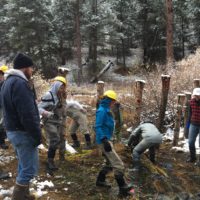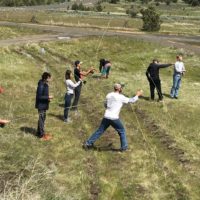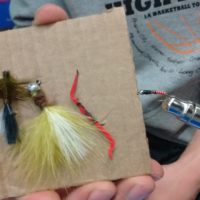In Grant County, children grow up amid rural farmlands surrounded by the stunning wilderness areas that protect the upper forks of the John Day River.
“We are a very rural and remote community and it is often assumed our local youth have unlimited access to the outdoors. Sadly that just isn’t the case,” says Valeen Madden, Executive Director for the North Fork John Day Watershed Council.
“That’s where our organization steps in.”
The North Fork John Day Watershed Council inspires awareness of the beautiful landscapes at the source of the legendary John Day River. At the same time, the organization invests in the success of the people who call this place home—including young people.
With funding from the Gray Family Foundation, the Watershed Council is taking nature to the classrooms of 120+ students each year from Long Creek, Dayville, Monument, John Day and other rural schools.
They’re also getting those kids outside through field trips to local streams, farms and natural areas.
For the youngest students, awareness of place starts at their own school, where the watershed council sets up vermicomposting bins in classrooms so that students can observe how worms—one of nature’s best recyclers—turn food scraps into fertilizer for the school garden. Kids also construct and decorate bat boxes for their school grounds and learn about the importance of local bats to the area’s ecology.
For middle and high-schoolers, the watershed council takes students out to nearby streams, where students team up with professionals from the Oregon Department of Fish and Wildlife to construct man-made beaver dams that help keep the watershed healthy. Students also tag fish and use an online tracking system to follow the fish from the river to ocean and, hopefully, back again.
They’re also learning about the basin’s native fish through the fun lens of fly fishing. First, students use nets to collect macroinvertebrate “bugs” from the river. Later, they learn to tie flies that mimic the bugs, and practice casting a line on a real stream. Long Creek School is even coming up with a plan to market the flies they’ve tied.
More growth is ahead for the watershed council’s education programs, which are opening students’ eyes to the possibility of natural resource careers. In the last year, two new high school graduates secured jobs with the U.S. Forest Service, thanks to these programs.
In an area where many families face unemployment and poverty, the watershed council is opening young eyes to the bounty around them—in nature, in their community and in their own inquisitive minds.
“Our program is becoming much more robust every year,” Sarah says. “It’s really exciting that we’re able to work with so many schools and broaden our reach.”



